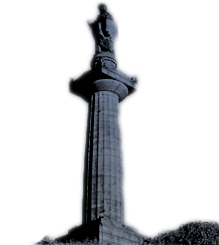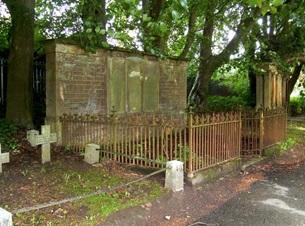The Crum Ewing Memorial
The burying place of HUMPHRY EWING CRUM EWING, of Strathleven Lord Lieutenant of Dumbartonshire HELEN DICK, his beloved wife Died August 27th 1883 HELEN TOLMIE DICK, their infant daughter Died July 30th 1833 HUMPHREY EWING CRUM EWING Died July 3rd 1887 JOHN DICK CRUM EWING, their second son Died October 15th 1890
HUMPHRY EWING CRUM EWING Junr Died at Better Hope Estate, Demerara March 12th 1878 and was buried here JANET CREELMAN ROBSON, his wife Died June 14th 1899
……………………………………………………………………………………………………………
Humphry Ewing Crum Ewing Snr of Strathleven (16 July 1802 – 3 July 1887)
Beta Compartment map location 132
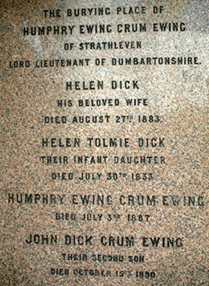
Crum Ewing Memorial Panel
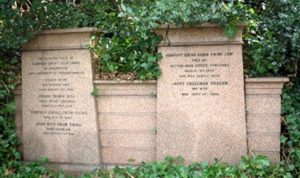
Crum Ewing Memorial
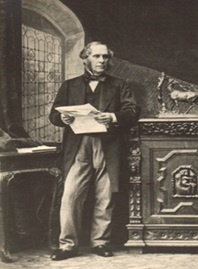
Humphry Ewing Crum Ewing Snr
Humphry was born on 16 July 1802 at ‘Renpenkore’, Thornliebank, (East) Renfrewshire, the third son of Alexander Crum (1769 – 1808) and Jane Ewing (1789 – 1852) [known as Jane Ewing Maclae because her father Walter Ewing changed his name to Walter Ewing Maclae when he inherited Cathkin House and estate, Carmunnock, (a conservation village now within the Glasgow city boundary) from his Uncle Walter Maclae of Cathkin who died in 1790].
Born Humphry Ewing Crum, Humphry added the second Ewing when he inherited Strathleven House and estate, Dumbartonshire, from his uncle, James Ewing, 1775-1853 (buried in Kappa compartment and profile at https://www.glasgownecropolis.org/profiles/james-ewing-of-strathleven/) from his uncle with its estates in Jamaica and St Kitts, West Indies Humphry also inherited the business of James Ewing & Co. He was also a Director of the Colonial Company of London.
More information on the complicated name changes between, Maclaes, Ewings & Crums can be found at http://gdl.cdlr.strath.ac.uk/smihou/smihou021.htm
As Humphry Crum, he was educated at Glasgow College (Glasgow University) and in 1825 he married Helen Dick (1792 – 1883) who is also included on this memorial. She was a daughter of Rev Dr John Dick (1764 – 1833) (buried in Omega Compartment – see his Profile www.glasgownecropolis.org/profiles/john-dick/)
Initially Humphry worked in the Crum manufacturing and merchanting business jointly owned by his father Alexander Crum of Thornliebank, 1769 – 1808 (senior Partner) and his uncle, John Crum. The Crum business had started in the Gallowgate and moved to St Andrews Square before growing into the very substantial 35 acre operation it became in Thornliebank.
Humphry accompanied his brother Walter Crum FRS (memorial in Beta compartment), on a business trip to Smyrna in Asia Minor (Turkey) though Humphry separated from him in Sicily. There being no regular method of reaching Sicily in those days, most of the journey was in a Royal Navy man of war. When they reached Leghorn (now Livorno) in Italy, they stayed with their friend John Graham who had developed an early interest in art and bought a house in Leghorn at the age of fifteen. John was co-founder with his elder brother William Graham (1786-1856), of the well known Port wine shippers W & J Graham & Co in 1820 at Porto, Portugal. John Graham was tenant of Skelmorlie Castle from 1848 till his death in 1886 and was buried in Upsilon compartment.
In 1848 Humphry joined the firm of James Ewing & Co, working with his uncle James Ewing whose partner William Mathieson had died that year (memorial in Beta compartment). Though slavery had been abolished in the British Empire in 1833, fifteen years before Humphry joined James Ewing & Co, Humphry was very much involved with and became Chairman of the powerful West India Association of Glasgow whose Minutes from 1807 – 1969 are available in the City of Glasgow Archives held in the Mitchell Library – see http://www.glasgowlife.org.uk/libraries/the-mitchell-library/archives/Pages/home.aspx.
In a letter dated 21st March 1848 from James Ewing to Humphry E Crum (Ewing), it is perhaps not surprising to read that the financial returns on the sugar plantations had dropped markedly as a result of the end of slavery and that it was now very difficult to make a profit and compete with those places like Cuba which still continued the practice of slavery. This did not put Humphry off joining the company as a Partner.
With the abolition of slavery the value of plantation land reduced substantially and Humphry took the opportunity to purchase a series of plantations for the company in British Guiana (now Guyana, South America). The purchases included the plantations on the Atlantic coast east of the Demerara River known as Better Hope, Vryheid’s Lust, Brothers, Montrose and Felicity. According to notes in ‘Guyanese Sugar Plantations in the Late Nineteenth Century – a Contemporary Description from The Argosy’ (1883?) edited by Walter Rodney, these were considered to have the best soil of all the plantations in the country.
In order to improve the land further, a Linlithgow expert farmer, Mr McGibbon, was sent out to examine the land with a view to increasing the drainage so as to reduce the flooding caused by heavy tropical rain. A report was submitted with suggestions and an ‘army’ of people were sent out from Scotland. They set up a tile (clay drains) manufacturing unit and the drainage tiles were installed in the ground by Chinese labourers under instruction from Mr McGibbon. In addition, 2 pumping stations were constructed and the ‘canals’ between the plantations were widened to ease the flow from the drains.
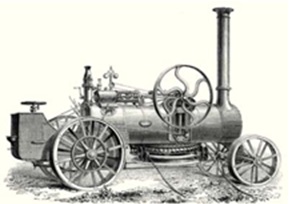
Steam Tractor
Sadly, the first tropical downpour flooded the plantations so McGibbon used steam tractors to reduce the height of the embankments along the canals and this reduced by 50%, the height water required to be pumped and the pumping stations were then adequate for the job. Thereafter drainage water from the whole area was pumped by the 2 Fowler’s tractor engines on each of the two main agricultural departments. The value of the sugar plant at Vryheid’s Lust was reckoned to have cost £20,000 and a further £6,000 for steam powered machinery and tile making machinery.
The management of the plantations was divided into agricultural and manufacturing sections and the whole operation was under the management of a resident attorney who resided at Better Hope House.
Manufacturing did not include distillation of rum; it concentrated on the manufacture of sweet sugar from crystals to ‘jaggery’ (a concentrated solid from sugar cane juice). The best product was a grey sugar which went to be refined and the jaggery mostly went to European brewers. The low dark molasses was sold on the local market.
The area of the whole block of plantations was split into 1,897 acres / 768 hectares of sugar cane, 57 acres / 23 hectares for provisions, and 1,251 acres / 506 hectares of uncultivated land used for grazing. The crop was estimated as c. 3,300 hogsheads / 2290 tons / 2077 tonnes of mixed sugars. The labour force consisted of 210 locals, 121 indentured labourers (from India) and 1,498 not under “indenture”. The latter were probably ex-slaves who on 1st August 1834 would have been re-designated as “apprentices” and required to work 40 hours per week without pay, as part of the compensation payment to their former owners for their freedom. Full emancipation was finally achieved at midnight on 31 July 1838.
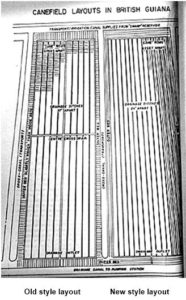
Canefield Layouts
N.B. – The system known as ‘indentured labour’ commenced after the emancipation of the slaves in 1838 when new labour required to be payed for their work.
The Colonial British Government of India started to supply labour to the sugar plantations and if the plantation owners paid for an Indian’s passage to the plantation, a sum would be taken off their pay until the full cost was reimbursed after which the labourer kept his full pay. This process could take anything between 4 and 6 years. Many Indians moved to the plantations paying for their own passages and they, plus freed slaves, were referred to as ‘labour not under indenture’. Between 1838 and 1920, British Guiana received 238,909 people from India, and 13,533 people from China.
For more information on the indentured system in British Guiana see www.uvic.ca/research/centres/capi/assets/docs/studentessays/Ono-George_Coolies_Containment_and_Resistance.pdf.
It is thought that Humphry never went to British Guiana even though through James Ewing & Co he owned the plantations of Better Hope and Vryheid’s Lust, Brothers, La Bonne Mere, Felicity and Montrose, while personally he was ‘part proprietor’ of Canefield and Lochaber plantations. (see UCL’s Legacies of British Slave Ownership http://wwwdepts-live.ucl.ac.uk/lbs/person/view/2146644131 )
In the 1851 Census Humphry and his wife Helen Dick were living at 20 Woodside Terrace, Glasgow and it is thought by 1868 they had rented and were living at Mains House, New Kilpatrick.
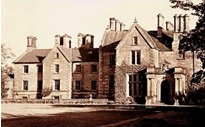
Mains House, New Kilpatrick
On the death of James Ewing in 1853, despite having inherited Strathleven House, Dumbarton, and changing his name to Humphry Crum Ewing, Humphry was unable to move into Stathleven House. Jane Ewing, James Ewing’s widow, who was eleven years younger than Humphry, had been given the life rent of Strathleven House in her husband’s will. She outlived Humphry by nine years and did not die until 1896 aged 83.
Humphry and his family are recorded in the 1881 Census as living in Ardencaple Castle, Helensburgh which he rented from the Colquhouns of Luss and where he remained until his death on 3 July 1887.
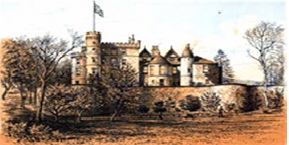
Ardencaple Castle, Helensburgh
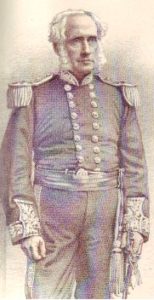
Humphry Ewing Crum Ewing as Lord Lieutenant of Dunbartonshire
He was appointed Lord Lieutenant of Dunbartonshire on 23rd February 1874, a position he held till his death; he was also a JP for Dunbartonshire, Argyllshire, Lanarkshire, and Renfrewshire.
Humphry was politically minded and keen to become a Member of Parliament. He finally succeeded in November 1857 when he became a Liberal MP for Paisley, having failed in April of the same year. He served for seventeen years and retired in 1874 at the age of 72; however in 1887 he left the Liberal party and joined the Unionist party. During his time at Westminster he was a member of two London Clubs, the Reform Club and Union Club. His parliamentary involvement / record can be viewed on http://hansard.millbanksystems.com/people/mr-humphrey-crum-ewing/
Funeral report from
Glasgow Herald (Glasgow, Scotland), Friday, July 8, 1887
FUNERAL OF THE LORD-LIEUTENANT OF DUNBARTONSHIRE.—The funeral of the late Mr H.E. CRUM-EWING of Ardincaple Castle, Row, took place yesterday afternoon. The remains were conveyed from the Castle for interment in the Necropolis, Glasgow, at twelve o’clock, and were followed by a large concourse of mourners, including relatives, friends, the Sheriff-Principal and Sheriff- Substitute of Dunbartonshire and other county and Burgh authorities. The Rev. Mr Hislop, U.P. Church, Helensburgh, conducted the service. As the cortege, which consisted of 32 carriages, passed through the town the church bells were tolled, and the shops on the route were closed. Numerous groups of people witnessed the procession.
On Sunday July 10th 1887, a memorial service was held in Helensburgh United Presbyterian Church.
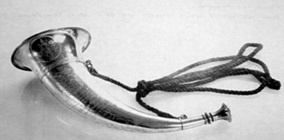
This 10” / 25Cms silver horn was presented to Paisley Archery Club in 1872 by Humphry Snr to be used as a competition trophy.
In the Proceedings of the Natural History Society of Glasgow, 3rd Jan 1871 it states–
Mr A H Dennistoun, Jun, exhibited a specimen of the Ptarmigan from Dunbartonshire, the locality being perhaps the furthest south of any known haunt of the species in Great Britain. This bird, which was in full summer plumage, had been shot by Mr Crum Ewing on the hills between Glen Fruin and Luss Glen, a haunt invested with additional interest from the circumstance of it being at a much lower elevation than the mountain tracts usually frequented by Ptarmigan.
[This was probably Alexander Crum Ewing, eldest son of Humphry Ewing Crum Ewing & Helen Dick and elder brother of Humphry Ewing Crum Ewing Jnr. Alexander eventually inherited Strathleven House and estate but died in Jamaica in 1912]
There is another memorial to Humphry Ewing Crum Ewing Snr, his wife Helen Dick, his Uncle, James Ewing and other family members in Dumbarton cemetery.
Crum Ewing Memorial – Dumbarton Cemetery
This memorial has three panels as below but those mentioned on the Glasgow Necropolis memorial are all listed in the left hand panel of this memorial.
|
Sacred to The memory of James Ewing |
Sacred to |
Also of |
| Notes | Alexander Crum Ewing is a son of Humphry Ewing Crum Ewing Snr MP | This Alexander is a grandson of Alexander in the central panel & son of Eva Constance (Hamilton), wife of Humphry above (d. Jamaica 1946), a son of Alexander (d. Jamaica 1912, central panel). |
Helen Dick [1792 – 14th June 1883]
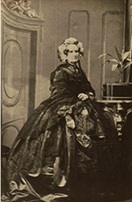
Helen Dick
The wife of Humphry Ewing Crum Ewing Snr, Helen Dick was the daughter of Rev Dr John Dick (1764 – 1833), minister of Greyfriars Secession church in Glasgow and Jane Coventry (d.1844), daughter of Rev George Coventry of Stitchell in Roxburghshire – see their memorial in Omega compartment and Profile of John Dick at https://www.glasgownecropolis.org/profiles/john-dick/
Humphry & Helen had five children:
Helen Tolmie Dick (died as an infant 30/7/1833), Alexander Crum Ewing, (became head of James Ewing & Co after his father and inherited Strathleven House and estate from his father. Died in Jamaica 1912). John Dick Crum Ewing, (on the memorial, died 15/10/1890). Humphry Crum Ewing (See below) and Jane Crum Ewing (1830 – 14/8/1908) who married General John Bailey CB of the Royal Engineers.
Helen died on 27th August 1883 and a memorial service was held in Helensburgh United Presbyterian Church on the following Sunday.
Humphry Ewing Crum Ewing Jr (1838 – 12 March 1878) – Beta compartment
HUMPHRY EWING CRUM EWING Junr Died at Better Hope Estate, Demerara March 12th 1878 And was buried here. JANET CREELMAN ROBSON, his wife Died June 14th 1899
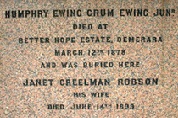
Humphry Ewing Crum Ewing Jr Memorial Panel
As stated above on the Glasgow Necropolis memorial, Humphry Jnr died in Better Hope, Demerara which is close to Georgetown Guyana (ex British Guiana). The wording on the memorial sent to Demerara by his parents and situated in the village of Better Hope is
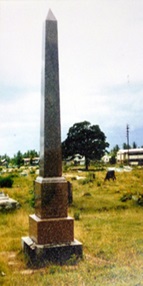
Guyana Memorial
ERECTED BY
H.E.CRUM EWING OF STRATHLEVEN
LORD LIEUTENEANT OF DUMBARTONSHIRE
AND
HELEN DICK CRUM EWING
IN MEMORY OF THEIR BELOVED SON
HUMPHRY EWING CRUM EWING
WHO DIED IN BETTER HOPE ESTATE
MARCH 12TH 1878
BURIED IN THE NECROPOLIS, GLASGOW
He that believeth in God shall have everlasting life
and I shall be his God and he shall be my son
NB – The same pink granite has been used for both the Glasgow and Demerara memorials
Humphry Ewing Crum Ewing Jnr was the third and youngest son of Humphry Ewing Crum Ewing and Helen Dick.
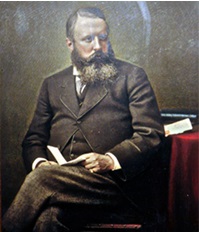
Humphry Crum Ewing Jnr
He was the fourth generation to complete an Arts degree at Glasgow University.
Like his eldest brother Alexander, Humphry followed his father into James Ewing & Co, the West India merchants started by his Great Uncle James Ewing (see https://www.glasgownecropolis.org/profiles/james-ewing-of-strathleven/) and also became chairman of the West Indian Association of Glasgow and a director of the Colonial Company of London.
Humphry was brought up mostly at Ardencaple Castle in Helensburgh which was rented by his father, Humphry Crum Ewing Snr and his mother Helen Dick.
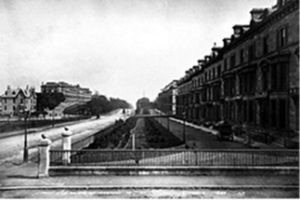 He married Janet Robson (1841 – 1899, see below), daughter of Neil Robson and Agnes Merry (see their memorial in Epsilon compartment). Humphry and Janet built and moved into No 28 Belhaven Terrace, beside Great Western road in Glasgow and this became their family home where they brought up their seven children:
He married Janet Robson (1841 – 1899, see below), daughter of Neil Robson and Agnes Merry (see their memorial in Epsilon compartment). Humphry and Janet built and moved into No 28 Belhaven Terrace, beside Great Western road in Glasgow and this became their family home where they brought up their seven children:
Agnes (1864-1908) – unmarried
Helen (1865-1968) – unmarried
Humphry (1866-19??) – married Ethel Ross
Jessie (1870-1941) – married Hilary Moullin
Jane (1872-1961) – married Charles Scott (Scotts’ shipbuilding & Engineering, Greenock in 1898.
Nigel / Neil (1874-1960) – Married Josephine Marie Anquez in 1922
Maud (1877-1972) – unmarried
James Ewing (see www.glasgownecropolis.org/profiles/james-ewing-of-strathleven/) and following on from him, the Crum Ewings were also owners of Caymanas estate in St Catherine’s parish, Jamaica a sugar and banana plantation and other estates including Crawle, a stock breeding estate in Jamaica; Humphry Jnr’s brother Alexander spent a lot of time in Jamaica and died at Caymanas on 30th Dec 1912. The British Guiana / Guyanese sugar interest were sold to Booker Bros & McConnell & Co who owned over 70% of the sugar plantations.
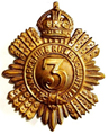
Third Lanark Volunteers
Humphry Jnr was very active in the famous 3rd Lanark Rifle Volunteers and by 1862 he was Colonel of the regiment. He commanded the Volunteers for some years and was also a prominent member of Prestwick Golf Club in its early years and interested in many forms of sport.
In fact following the first Scotland v England football / soccer international in 1872, the regiment held a meeting in the Regimental Orderly room in East Howard St, Glasgow at
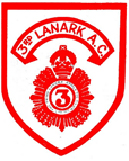
Third Lanark Football Club Badge
which the proposal to form a football club was proposed and it was emphasised that the then Lieutenant-Colonel H E Crum-Ewing, the majority of the Officers and twenty-five other members of the Regiment had signified their willingness to support such a club. The proposal was agreed and the famous team Third Lanark Football Club was established. The club was one of the early members to form the Scottish Football Association (SFA). The club existed from 1872 till its tragic demise in 1967. Purple TV made a documentary about the club for BBC Alba first broadcast on Sat 27th Jan 2018.

Lt. Col. Humphry Ewing Crum Ewing (Jnr) 3rd Lanark Volunteers (part of painting of all the Glasgow Volunteers in Kelvingrove Museum & Art gallery, Glasgow
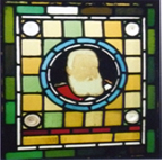
Lt. Col Humphry Ewing Crum Ewing
In a window that used to be in the
3rd Lanark Volunteer’s Drill hall.
Humphry Crum Ewing Jnr died at the early age of 40 at Better Hope, Demerara and his body was shipped back to be buried in Glasgow Necropolis. For more on the British Guiana sugar trade see http://custom-essay-cheap.com/effects-of-the-1884-beet-sugar-crisis-on-british-guiana-and-barbados/
Death Notice – The Colonist 12th March 1878 (a Georgetown newspaper)
Ewing – This afternoon at Better Hope House, at Vryheid’s Lust, of apoplexy, Humphry Crum Ewing Jnr.
[Historically, ‘apoplexy’ was used to describe any sudden death which began with loss of consciousness]
Janet Creelman Robson (1841-1899)
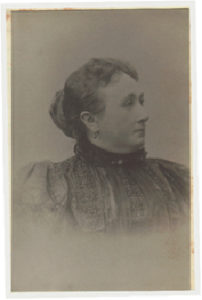
Janet Creelman Robson (1841-1899)
Janet was the wife of Humphry Ewing Crum Ewing Jnr and daughter of Neil Robson (d.1869) and Agnes Merry (d.1883, Epsilon compartment). Through her mother she was a grand daughter of James Merry Snr (d.1841) and Janet Creelman (d.1854, Gamma compartment) and a niece of James Merry Jnr of Belladrum (d.1877, Zeta compartment).
Neil Robson, Janet’s father, was a well known Civil Engineer, senior partner of Messrs Robson, Forman & McCall and later partner with his brother-in- law, James Merry Jnr of Belladrum in the firm of Merry and Cunningham. As a civil engineer he was responsible, among other achievements, for the construction of the Glasgow to Helensburgh Railway line.
Janet’s father in law, Humphry Ewing Crum Ewing Snr was an MP for Paisley at the same time as Janet’s brother James Merry Jnr was MP for Falkirk and Burghs. The story goes that a fellow MP commented on James Merry’s excellent fashion in the way he always voted and questioned how he managed to achieve such skill; James Merry’s response was “when I know nothing of the subject before the House or feel at a loss what to do, I always watch to see how Crum Ewing is going and follow him into the lobby”!
Janet Creelman Robson, Humphry Jnr’s wife, died in 1899 at Drumkilbo, Meigle, Perthshire, which she rented. Death Notice – Glasgow Herald Friday, June 16, 1899
CRUM EWING, Janet C
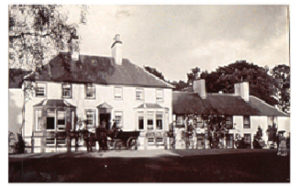
Drumkilbo, Meigle, Perthshire
At Drumkilbo, Meigle, Forfar, on 14th inst., Jessie Creelman Robson, widow of Humphry Ewing Crum Ewing, of 28 Belhaven Terrace, Glasgow.—Funeral on Saturday, from Buchanan Street Station, Glasgow, to Necropolis on arrival of 12.20 train from Perth (due 2 p.m.). — Friends, kindly accept this intimation and invitation.









